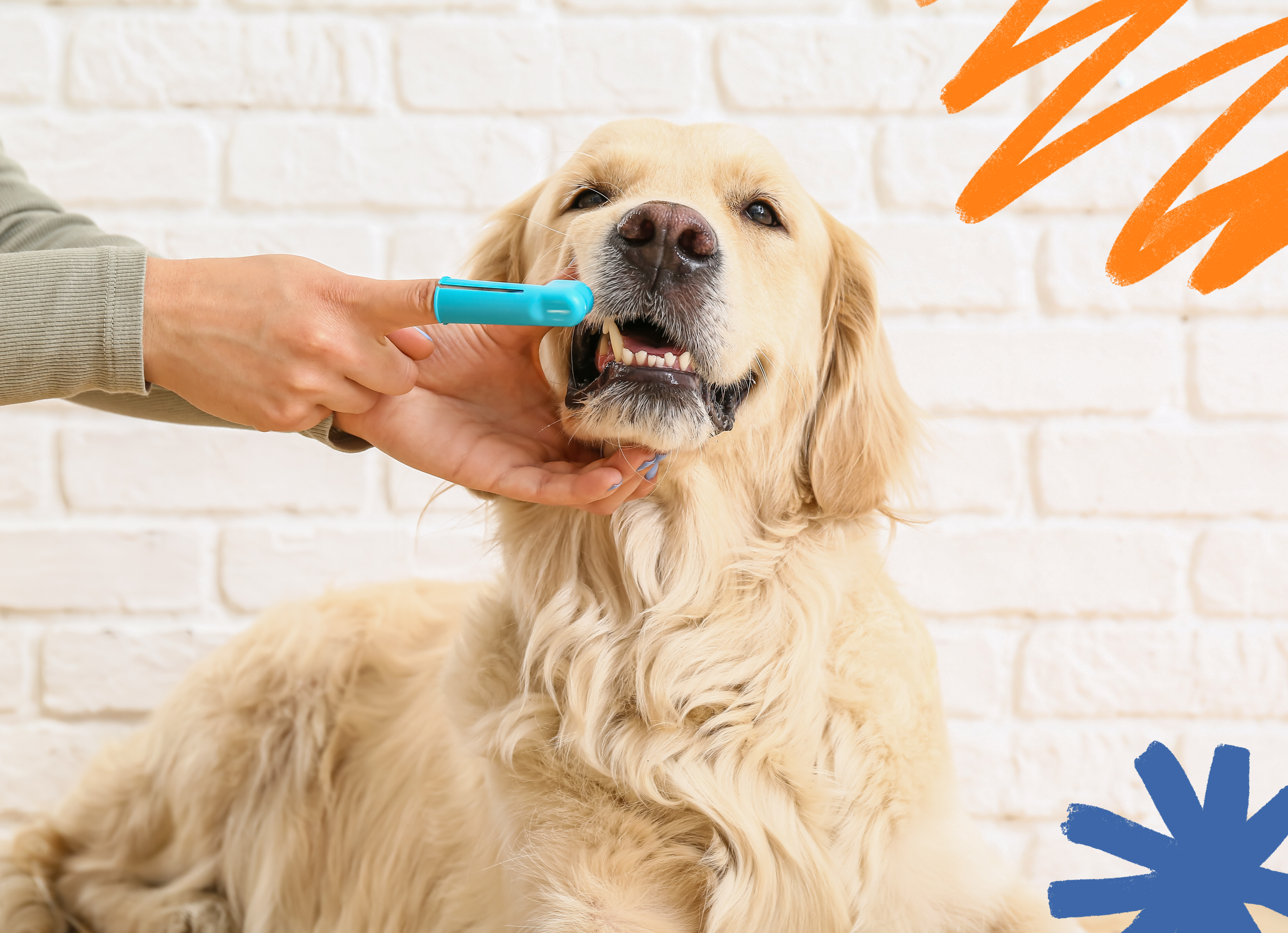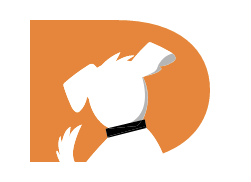
February is National Pet Dental Health Month, and there’s one serious statistic about your dog's mouth that needs highlighting:
Did you know that 80% of dogs and 70% of cats will grapple with some form of dental disease before they celebrate their 3rd birthday?
That's why at-home dental care is a necessary form of proactive action for your dog's health. Even if brushing a dog's teeth can be daunting, you can work out a routine that feels good for everyone.
At DOGTV, we like to be transparent: we have affiliate relationships with other companies. We may receive a commission on qualifying purchases made via the links in this article at no extra cost to you.
What kinds of dental diseases are common in dogs?
Periodontal disease is the most common oral health condition in dogs, and it can happen regardless of age. We’re talking about gingivitis and tooth loss. Worse, when the bacteria in your dog’s mouth enter the bloodstream, it can impact other major organs, such as the heart, kidney, or liver.
What if you’ve never brushed your dog’s teeth before?
For first-timers, start slowly with lots of high-value treats and “good dog!” praise. Take it slow and be patient. If this is new for your pup, it may take some time for them to get used to the process. Frequently read their cues to see if they are comfortable.
Step 1. Dog’s mouth, meet finger.
You can ease dogs into the teeth-brushing process by getting them comfy with your index finger touching their lips, teeth, and gums. Desensitization is key!
Step 2. Introduce dogs to pet-safe toothpaste.
If they lick it off your finger, let them. Keep doing this until they’re comfortable enough to allow you to gently rub some of the toothpaste on their teeth or gums.
Step 3. Start getting dogs acquainted with a finger toothbrush.
You can brush your dog’s teeth in segments to avoid overwhelming them. Focus on different sides for up to 30 seconds each, with a reward break in between.
Remember, if your dog’s not feeling it, don't push it. Repeat step 1 or step 2 twice daily until your dog gives you the A-OK to move to the next or final step.
How often should you brush your dog’s teeth?
Take note that plaque forms on your dog’s teeth a few hours after eating. So, for optimal dog mouth health, aim to brush your dog’s teeth every day.
But when life happens, and you forget to do it? At least three times a week can be as effective. Just don’t go longer than seven days without giving your dog’s mouth some TLC, or all that plaque continues accumulating, hardening, and turning into tartar (that’s way more difficult to get rid of).
What’s the best method to brush your dog’s teeth?
- Using small, circular motion, gently brush your dog's teeth, but make sure you scrub hard enough to remove plaque.
- Focus on the gum line—that's where dental disease starts wreaking havoc.
- Don't skip brushing the back teeth because plaque and tartar build up fast over that area.
What kind of tools will you need to brush your dog’s teeth thoroughly?
You can choose between finger brushes (perfect for a smaller dog's mouth) or pet toothbrushes (especially for larger breeds). Got an extra soft-bristled toothbrush for human babies lying around? You can use that, too.
When it comes to toothpaste, the only option is the pet-friendly kind. Many of these toothpastes come in yummy flavors and contain enzymes that help break down plaque. (Toothpaste for humans, on the other hand, includes ingredients unsafe for dogs to lick or swallow.)
What other forms of dental care can you look into?
The following supplemental care in between brushings can aid in reducing plaque or tartar.
- Dental treats or chew toys: Think of them as floss for dogs that can be a great addition to traditional brushing.
- Water or food additives. Look for oral health products with the Veterinary Oral Health Council (VOHC) Seal of Acceptance.
- Regular cleanings at the vet: Professionally brushing your dog's teeth every 6 to 12 months is highly recommended. This is not only to remove invisible plaque and tartar but also to address any hidden issues below the gum line.
Education is the first step! Once you’ve taken that first step, you’re well on your way to maintaining a healthier mouth for your dog. Want more information about canine oral care? Schedule semi-annual wellness appointments with your veterinarian and ask for the specific dental needs of your dog based on age and breed.

 Caitlyn Mellor
Caitlyn Mellor